12 items found
Page 1 of 1
-
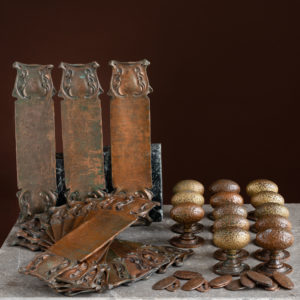
Set of late Victorian door furniture,
£1,450Set of late Victorian door furniture,
consisting of thirteen knobs, thirteen fingerplates, and nine escutcheons. Dimensions: Door knobs: 7.5 cm high x 6 cm wide, Fingerplates: 32 cm high x 8.5 cm wide x 0.5 cm deep Escutcheons: 4.8 cm high x 2.5 cm wide x 0.5 cm deep£1,450 -
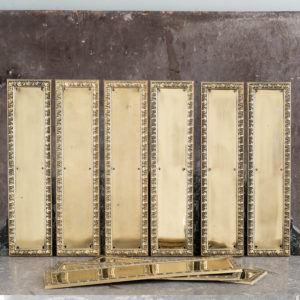
Set of nine Victorian brass finger plates
£500 the setSet of nine Victorian brass finger plates
with repeating cabochon detail to the borders.£500 the set -
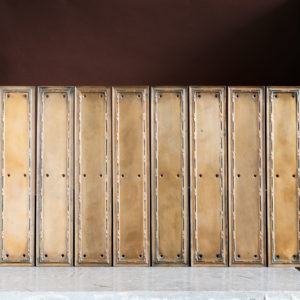
Set of antique ‘Hopes’ bronze finger plates
£450 the set -
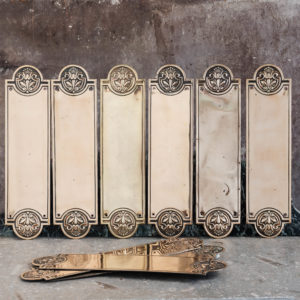
Set of Edwardian brass fingerplates
£400 the set -
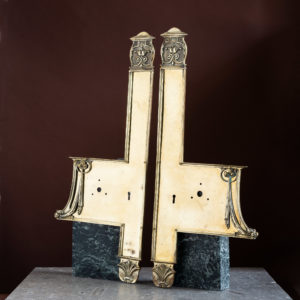
William Tonks and Sons brass door plates,
£350 -
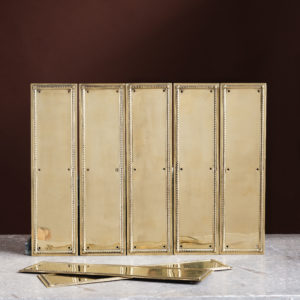
Set of brass ropetwist finger plates
£300 the set of sevenSet of brass ropetwist finger plates
seven in the set, late Victorian or Edwardian, c.1900£300 the set of seven -
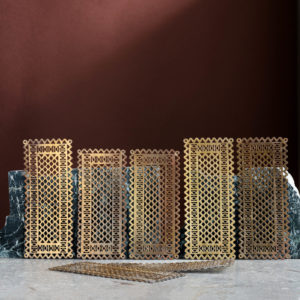
Set of Victorian pierced brass finger-plates
£250 the set of sevenSet of Victorian pierced brass finger-plates
some retaining the original gilt-lacquer, two smaller (17.5cm height)£250 the set of seven -
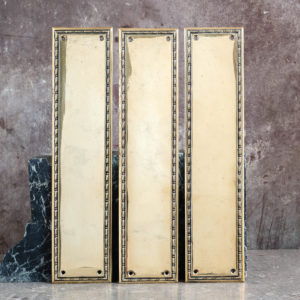
Victorian brass finger plates
£150 -
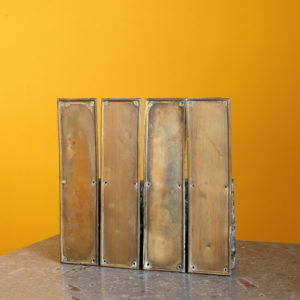
Set of pressed brass fingerplates
£80 the set of fourSet of pressed brass fingerplates
The set unpolished pressed brass fingerplates, each with fixing holes, having raised and fielded detail. English early twentieth century.£80 the set of four -
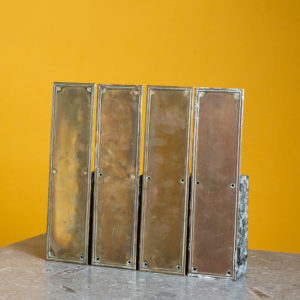
Set of pressed brass fingerplates
£80 the set of fourSet of pressed brass fingerplates
The set of unpolished pressed brass fingerplates, each with fixing holes, and raised and fielded detail. English early twentieth century.£80 the set of four -
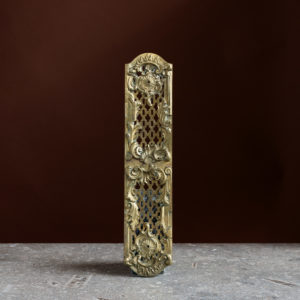
Nineteenth century French finger plate
£75 -
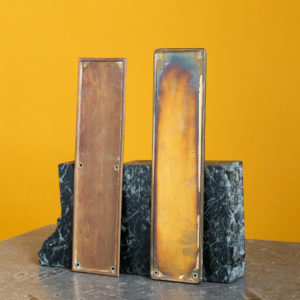
Two pressed brass fingerplates
£40 the matched pairTwo pressed brass fingerplates
The matched pair of brass finger plates each with a tarnished finish, one with four fixing points the other six fixing points both with raised and fielded detail. English early twentieth century.£40 the matched pair
Featured Items
-
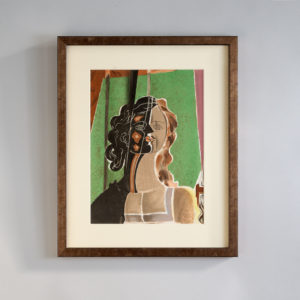
Figure by Georges Braque, Verve Vol 2 / No. 5-6.
£800Figure by Georges Braque, Verve Vol 2 / No. 5-6.
The Verve Review was a purposefully luxurious. It ran from 1937 to 1960, but with only 38 editions available, due to the high degree of design and editorial work dedicated to each issue. Each edition contained unique lithographic prints, commissioned by the editor, and each cover a double-page lithograph elaborated by one of the artists contained within. It was the brainchild of its editor Stratis Eleftheriades, a Greek National who moved to Paris in the early thirties to take part in the growing Modernist movement, writing under the name of Teriade.£800 -
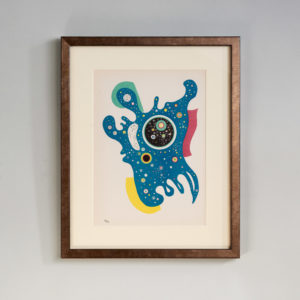
Stars by Wassily Kandinsky, Verve Vol. 1 / No. 2.
£800Stars by Wassily Kandinsky, Verve Vol. 1 / No. 2.
The Verve Review was a purposefully luxurious. It ran from 1937 to 1960, but with only 38 editions available, due to the high degree of design and editorial work dedicated to each issue. Each edition contained unique lithographic prints, commissioned by the editor, and each cover a double-page lithograph elaborated by one of the artists contained within. It was the brainchild of its editor Stratis Eleftheriades, a Greek National who moved to Paris in the early thirties to take part in the growing Modernist movement, writing under the name of Teriade.£800 -
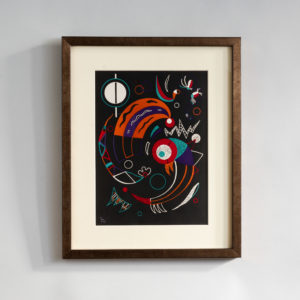
Comets by Wassily Kandinsky, Verve Vol. 1 / No. 2.
£800Comets by Wassily Kandinsky, Verve Vol. 1 / No. 2.
The Verve Review was a purposefully luxurious. It ran from 1937 to 1960, but with only 38 editions available, due to the high degree of design and editorial work dedicated to each issue. Each edition contained unique lithographic prints, commissioned by the editor, and each cover a double-page lithograph elaborated by one of the artists contained within. It was the brainchild of its editor Stratis Eleftheriades, a Greek National who moved to Paris in the early thirties to take part in the growing Modernist movement, writing under the name of Teriade.£800 -
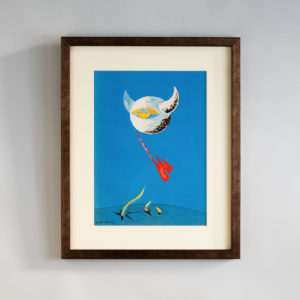
The Moon by André Masson, Verve Vol. 1 / No. 2.
£600The Moon by André Masson, Verve Vol. 1 / No. 2.
The Verve Review was a purposefully luxurious. It ran from 1937 to 1960, but with only 38 editions available, due to the high degree of design and editorial work dedicated to each issue. Each edition contained unique lithographic prints, commissioned by the editor, and each cover a double-page lithograph elaborated by one of the artists contained within. It was the brainchild of its editor Stratis Eleftheriades, a Greek National who moved to Paris in the early thirties to take part in the growing Modernist movement, writing under the name of Teriade.£600
